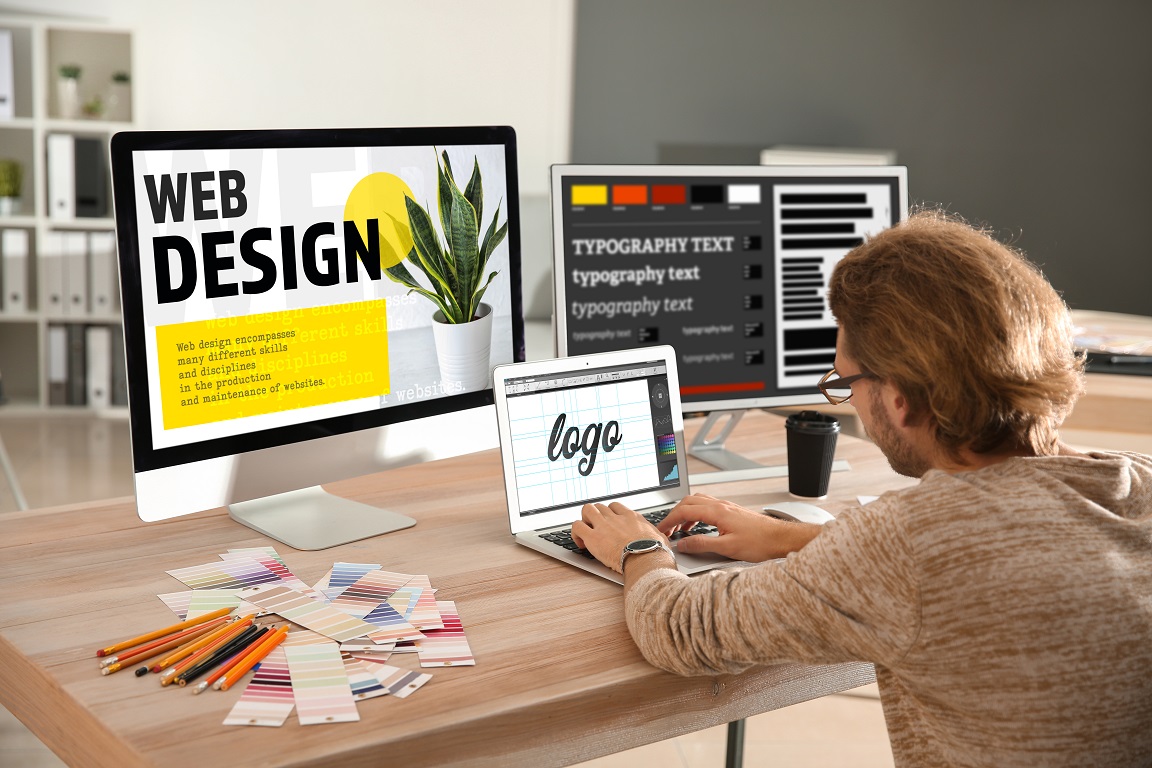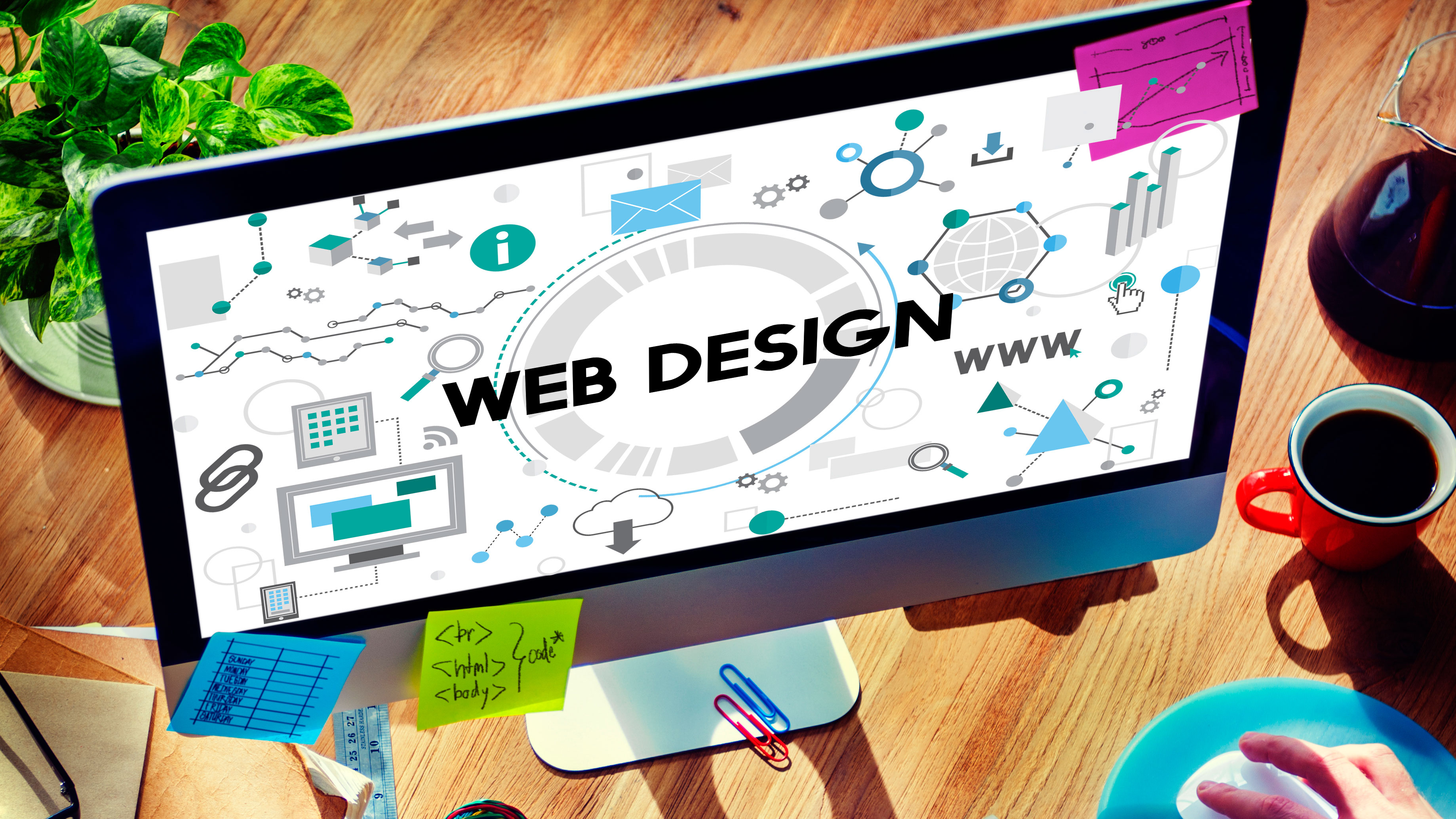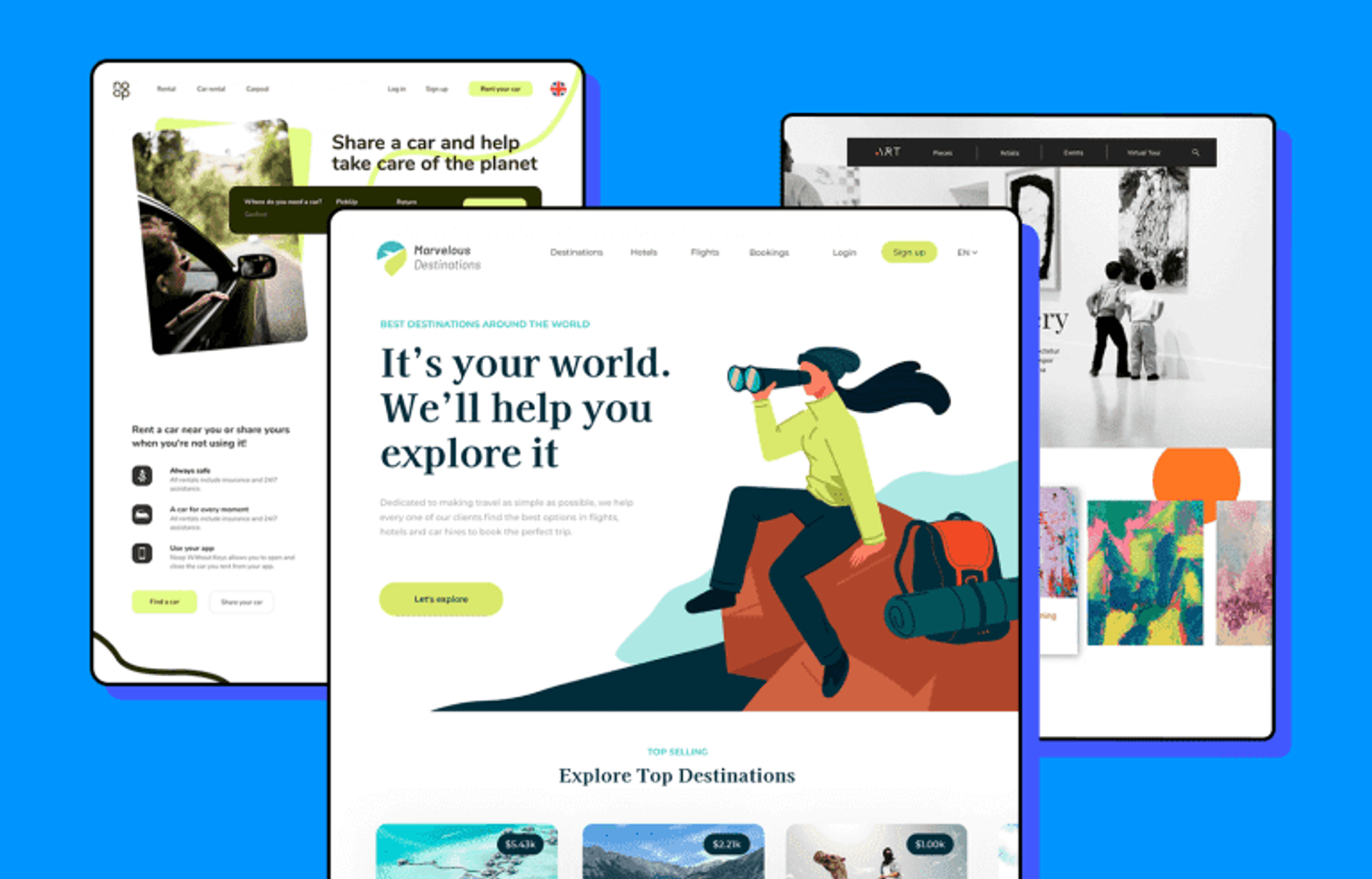Professional Aligned Position Web Design: Custom Websites Tailored to Your Business Needs
Professional Aligned Position Web Design: Custom Websites Tailored to Your Business Needs
Blog Article
The Ideal Sorts Of Website Design to Boost Individual Experience and Involvement
In the ever-evolving landscape of electronic communication, the efficiency of website design significantly influences user experience and involvement. Various style techniques, such as minimalist, receptive, and interactive layouts, each deal distinct benefits that can deal with diverse customer requirements. Comprehending which kinds of Web style finest offer these purposes can be pivotal for businesses aiming to enhance customer satisfaction and retention. The concern stays: which style aspects genuinely resonate with customers and foster purposeful engagement? The exploration of these principles exposes critical insights that may redefine your technique to Web layout.
Minimalist Website Design
As digital landscapes become increasingly cluttered, minimalist website design has emerged as a powerful method to boosting user experience. This style ideology prioritizes simpleness, concentrating on crucial aspects while removing unnecessary interruptions. By making use of sufficient white area, straightforward navigating, and a limited color combination, minimalist design cultivates clarity and routes customer attention to crucial content.
The core concept of minimalist website design is to create a seamless communication for individuals. By minimizing cognitive lots, customers can quickly comprehend information without really feeling bewildered. This straight strategy not just enhances functionality however also urges interaction, as visitors are extra likely to explore a site that is aesthetically appealing and very easy to browse.
Furthermore, minimalist style typically emphasizes typography and images, utilizing these components strategically to communicate messages successfully. This emphasis on important parts can enhance brand name identity and produce a remarkable individual experience. In significance, minimal website design is not just a fad; it is a thoughtful approach that identifies the importance of user-centered style. By removing away peripheral elements, developers can develop a more appealing, reliable, and enjoyable Web experience for all individuals.
Responsive Website Design
In today's varied electronic environment, responsive Web layout has actually become vital for developing a seamless individual experience throughout a plethora of tools. As users accessibility internet sites on smart devices, tablets, laptop computers, and desktops, the ability of a site to adapt its layout and content to different display dimensions and resolutions is critical.
Receptive website design utilizes flexible grids, images, and CSS media questions to make certain that Web material exists optimally, despite the tool made use of. This approach not just boosts the aesthetic charm of a site but also considerably improves usability. Customers are more probable to engage with a site that supplies a regular experience, as it gets rid of the stress of needing to zoom in or scroll excessively.
Moreover, search engines, including Google, prioritize mobile-friendly websites in search positions. By embracing responsive layout, services can improve their visibility and get to a wider target market. This method likewise simplifies website upkeep, as a single version of the website can deal with all gadgets, decreasing the requirement for multiple versions. In recap, responsive Web design is a basic practice that boosts user experience, involvement, and general satisfaction.
Interactive Website Design
Receptive website design lays the foundation for enhancing individual experience, yet interactive Web style takes this an action additionally by engaging users in a much more vibrant means - Aligned Position Web Design. By incorporating aspects such as computer animations, clickable prototypes, and real-time feedback, interactive Web style astounds customers, drawing them into a richer browsing experience
This technique not just cultivates engagement however likewise urges customers to explore content actively as opposed to passively consuming it. Methods such as gamification, where individuals make incentives for finishing jobs, can significantly enhance the time spent on a site and enhance general fulfillment. Interactive attributes can streamline intricate details, making it more digestible and enjoyable.

Including interactive layout elements can additionally cause greater conversion prices, as users are most likely to involve with a website that actively includes them. Aligned Position Web Design. Inevitably, interactive website design changes user experiences into unforgettable trips, guaranteeing that site visitors return time after time
Flat Style
Identified by its minimalistic strategy, flat design emphasizes simplicity index and functionality, stripping away unnecessary aspects and concentrating on essential functions. This style viewpoint prioritizes functionality, making sure that customers can browse interfaces with ease and effectiveness. By employing a clean aesthetic, level style gets rid of the mess usually located in more elaborate designs, therefore boosting individual focus on material and functionality.
The hallmark of level layout depends on its use strong shades, basic typography, and geometric shapes. These elements add to an aesthetically attractive interface that is both friendly and contemporary. Additionally, level layout promotes a sense of quality, enabling users to discern crucial activities and information without interruption.
Furthermore, level style is especially efficient in responsive Web design, as its simpleness converts well across numerous devices and display sizes. The absence of intricate appearances and gradients minimizes filling times, which is vital for preserving customer interaction. As digital landscapes proceed to evolve, level design continues to be an appropriate choice for producing easy to use websites that improve overall experience. By focusing on essential attributes, level design not only fulfills user demands but likewise urges seamless communication, making it a vital component of reliable Web layout strategies.
Flexible Web Layout
Flexible Web style customizes the individual experience by developing several taken care of layouts customized to various screen sizes and tools. Unlike responsive layout, which fluidly readjusts a single design, adaptive design uses distinctive formats for specific breakpoints, making sure ideal discussion on numerous systems. This strategy permits designers to focus on the special characteristics of each device, boosting usability by delivering exactly what customers require based upon their context.
Among the key benefits of adaptive Web design is its ability to optimize tons times and performance. By offering customized web content and photos that fit the customer's tool, web sites can lessen data usage and improve loading rates. This is specifically valuable for customers with slower links or limited data strategies.

Additionally, adaptive layout helps with an extra controlled and constant branding experience. Considering that developers create several formats, they can ensure that the aesthetic components align with the brand's identification throughout different platforms - Aligned Position Web Design. This leads to a natural user experience, improving involvement and advertising user retention
Final Thought
In verdict, the integration of look here minimalist, receptive, and interactive Web design concepts significantly improves customer experience and engagement. Minimalist style cultivates quality and focus, while responsive design makes sure flexibility throughout various devices, promoting availability. Interactive layout astounds users through vibrant components, urging expedition and customization. Collectively, these layout comes close to add to the creation of easy to use settings that not only enhance contentment but also drive higher conversion rates, highlighting their essential importance in contemporary Resources website design strategies.

Minimal design promotes clearness and emphasis, while receptive design makes sure flexibility throughout various gadgets, promoting accessibility. Collectively, these style approaches contribute to the development of easy to use settings that not just boost satisfaction however likewise drive higher conversion prices, highlighting their essential importance in contemporary Web design techniques.
Report this page